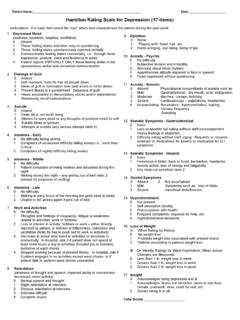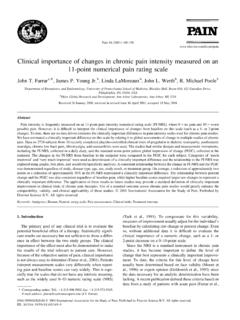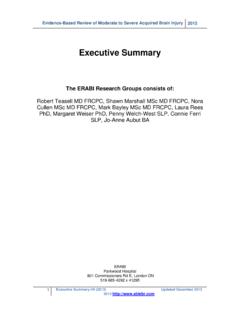Transcription of PEDro scale (partitioned): Rating sheet - OTseeker
1 The PEDro scale ( partitioned ) is a version of the PEDro scale adapted for OTseeker . The PEDro scale was developed by the creators of PEDro (The Physiotherapy Evidence Database) PEDro scale ( partitioned ): Rating sheet The PEDro scale ( partitioned ) is used for Rating the presence or absence of 8 internal validity criteria and 2 statistical reporting criteria relevant to randomised controlled trials in the OTseeker database It is an adaptation of the PEDro scale and may be copied with acknowledgement of both websites.
2 Please see the Guidelines and Explanations document for more information about each criterion. If on a literal reading of the trial report it is possible that a criterion was not satisfied or reported, that criterion receives a No . Please note: The best interpretation of this information is to consider the potential impact that the presence or absence of each of these criteria might have on the trial, rather than the number of criteria met. Internal Validity (8 Criteria) Criteria Rating 1. Subjects were randomly allocated to groups (in a crossover study, subjects were randomly allocated an order in which treatments were received).
3 Yes No Where: 2. Allocation was concealed. Yes No Where: 3. The groups were similar at baseline regarding the most important prognostic indicators. Yes No Where: 4. There was blinding of all assessors who measured at least one key outcome. Yes No Where: 5. There was blinding of all subjects. Yes No Where: 6. There was blinding of all therapists who administered the therapy. Yes No Where: 7. Measures of at least one key outcome were obtained from more than 85%of the subjects initially allocated to groups.
4 Yes No Where: 8. All subjects for whom outcome measures were available received the treatment or control condition as allocated or, where this was not the case, data for at least one key outcome was analysed by intention to treat . Yes No Where: Statistical reporting (2 Criteria) 9. The results of between-group statistical comparisons are reported for at least one key outcome. Yes No Where: 10. The study provides both point measures and measures of variability for at least one key outcome.
5 Yes No Where: 11. Eligibility criteria were specified (Reported separately) Yes No Where.









